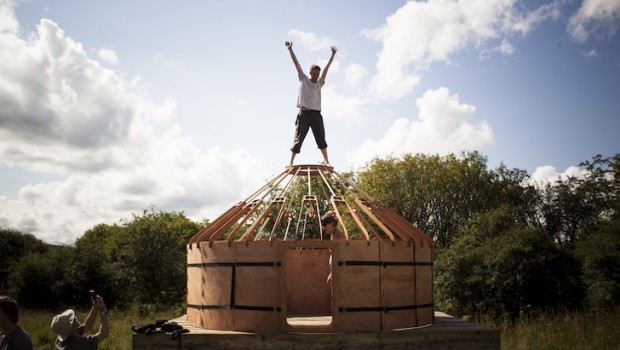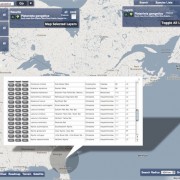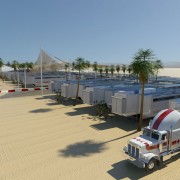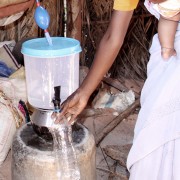This website uses cookies so that we can provide you with the best user experience possible. Cookie information is stored in your browser and performs functions such as recognising you when you return to our website and helping our team to understand which sections of the website you find most interesting and useful. More information about our Cookie Policy
-

Covid-19 rapid deployment test centre
Two of the most pressing needs worldwide in the coronavirus pandemic are for more hospital beds and testing centres. No country in the world has enough hospital beds or intensive-care unit (ICU) beds for a pandemic. We need structures that can be quickly and easily assembled, are inexpensive and meet technical requirements. Architects have always […]
-

Biodiversity conservation and business
The biological diversity makes our lives livable in the planet trough an array of ecological processes which provide us vital products and services, such as foods and materials that contributes to the economy. Although, factors such as habitat destruction, biological invasion and climate change have been taken numerous species to extinction. The lasting natural areas […]
-

Blue Freedom – Providing reliable first aid electricity from hydropower
Electrical power supply is among the first critically important services in disaster areas. Especially natural disasters such as hurricanes, earthquakes or floodings lead to a destruction of the installed power grid and portable electricity becomes indispensable. One innovative solution is Blue Freedom Portable, a lightweight hydropower generator with 5W output capacity. With a weight of […]
-

Transition of Shelters – Portable Emergency Shelter
Migratation of refugess are indeed a serious disruption of the functioning of a community or a Society involving widespread human, material, economic or environmental losses and impacts, which exceeds the ability of the affected community or society to cope using its own resources. It affects both physically and mentally. It also causes health and safety […]
-
Inflatable Refugee Tents
A new refugee tent has been designed by the team at M2B Inflatable in Sofia, Bulgaria. This refugee tent is inflatable and will offer an affordable, dignified and practical shelter against extreme weather. The inflatable tent provides immediate emergency housing solutions and adapts to any disaster area. The inflated walls of the tent will offer […]
-

The Modern Yurk – A Possible Design for Relief Scenarios?
The Scottish company Trakke has redeveloped the nomadic yurt shelter and created the Jero Yurt. The temporary housing innovation is a lightweight dwelling that pops up and was designed to be used for events such as backyard parties or off-grid camping experiences with a modern twist. The Jero’s compact design even allows it to be […]
-

innonatives first challenge winners 2015
The innonatives team is proud to present the first winners of the first completed innonatives challenge. Please see here for the winning solutions of the Sustainable Kitchen challenge http://innonatives.com/challenge/sus-brazil/solutions-sorted/winners Congratulations to the winners !!! Your innonatives Team
-

AIDF Disaster relief infographic d4d
Download & share the #infographic on the importance of #PPPs & #tech in disaster management: http://bit.ly/1qj6Evn http://ow.ly/i/6Ku5d
-

PowerCube Pop-up Solar Generator Provides Relief to Disaster-Struck Areas
It was seven years ago that Ecosphere Technologies revealed its first iteration of a self-contained relief unit for disaster-struck areas. The company has since been busy refining the system’s form and function and has now announced the completion of what it says to be the world’s largest deployable solar power generator. Capable of generating 15 […]
-

Sustainability Maker needs you !
Join the next big thing! Attend the first Sustainability Maker Convention, the world’s first conference on Open Innovation, Crowd Sourcing and Crowd Funding for Sustainability. Be among the first to witness the start of the next Sustainability innovation movement and to know about the www.innonatives.com open innovation for Sustainability platform. Registration Please register online before October […]
Most important and featured
Soil Decontamination/ Phytoremediation
After man-made chemical or nuclear accidents, soil often remains contaminated with chemical substances that are dangerous to human health. In order to recover contaminated soils, chemicals can be extracted either chemically by acids or biologically by plants. The removal by plants is called, phytoremediation. In chemical cleansing the soil has to be removed and treated […]
Demining
MgM Menschen gegen Minen / People Against Landmines is an NGO working in the field of landmine detection and destruction. Their website provides a thorough insight into the subject, both on political implications and on practical demining methods and new technologies. The existence of landmines in public spaces is one of the cruelest aftermaths of […]
Management and Organization
To ensure the efficiency and quality of a relief programme, aid organizations act according to a carefully developed procedure. The common standards applying to all areas of relief work are elaborated by the Sphereproject. The basic principles that must function in order to ensure the quality of a relief programme concern the staff, the continuous […]
Mental and Social Care
To enhance the psychosocial well-being of people affected by disaster certain standards should be followed in managing the aftermath of a disaster or a refugee camp. These standards are thoroughly described by the Sphereproject. General means of stabilizing the social situation in the camp and of providing psychological and psychiatric care are to be differentiated […]
INEE Interagency Network for Education in Emergencies
Alike the Sphereproject for other sectors, the INEE has formulated minimum standards for education in emergencies which comply and relate to guidelines of Sphere. Facilitating educational activities are an important part of relief work as they provide structure of everyday life, offering the affected population a sense of return to normalcy, of stability, of life […]
Malnutrition
Malnutrition is a phenomenon related both to a shortage in food security and to medical issues. Its occurrence is often but not always related to food shortage. The persons affected are to be perceived as being in need not only of food but of medical supervision, attendance and care. The phenomenon of malnutrition and procedures […]
Healthcare
The right to health is a basic human right embodied in various international legal constitutions. This right includes, not only, access to a healthcare system, but also access to other determinants of health – nutrition, water and sanitation, housing, safe environmental conditions, health-related education, non-discrimination and life in human dignity. Health impacts of disasters: Direct: […]
Food Security and Food Aid
The issues of security, food aid and malnutrition make a complex system of intertwined aspects. Food security deals with the right and the physical and economic access of human beings to food, not only dependent on supply but also on employment, income, political and social implications. Procedures undertaken to assess problems of food insecurity are […]

Basic equipment and supply
The Sphere Project has defined the basic equipment that a refugee person should be provided with. The equipment can be divided into what is needed per household and per person. Each household: Each household needs shelter for protection against climate and diseases, for privacy and social security, ideally including the possibility for subdivision and needs to […]
Water and Sanitation
The level of water security and hygiene in a refugee camp depends on two factors: the facilities provided and the population’s hygienic behavior. A sufficient hygienic situation can only be achieved by a strategy of distributing knowledge, mobilizing residents and providing residents with essential facilities and materials. Water is not only needed for nutrition but […]

Shelterproject
Transitional settlement: displaced populations gives an extensive, detailed overview of how to implement settlements for displaced populations exclusively; the guidelines don’t comply to reconstruction after conflict or disaster, return to homelands or permanent settlement on new sites. The first section of the guidelines deals with a general overview on the subject. It deals with strategic […]

Standardization for Refugee Camps
Standardizations for the basic size, lay-out, and structure of refugee camps have been defined by the Sphere Project, which was launched in 1997 by the UN and several NGOs, with the mission to improve the quality of relief aid. Results have been published in a handbook, on the organization’s website and are promoted by training […]




















